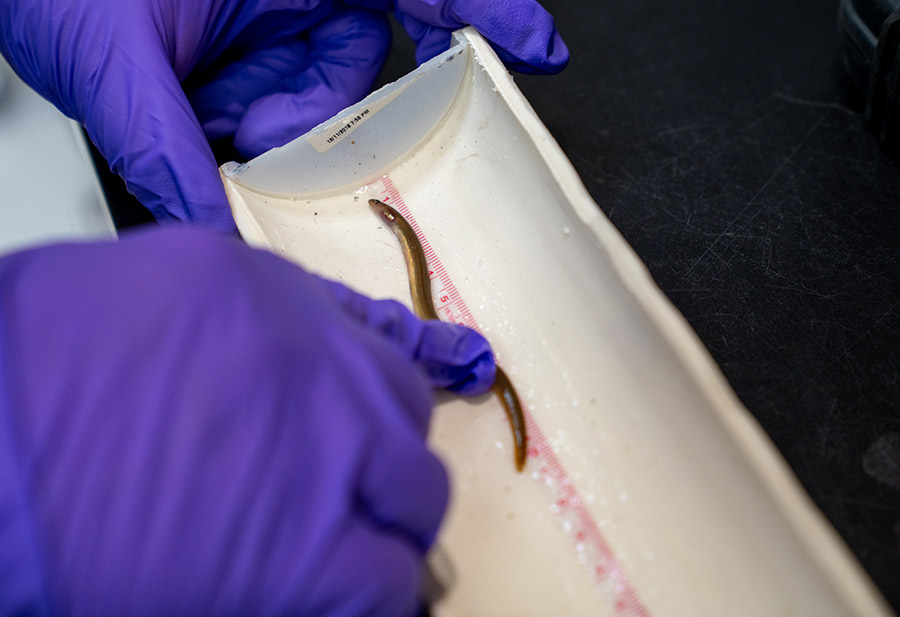Santee Cooper's Eel-evated Efforts to Help the American Eel in South Carolina

Santee Cooper’s Biological Services team initiated conservation efforts in South Carolina to protect the declining American eel population. Maintaining our lakes requires keeping invasive species like the giant salvinia fern out and propagating native species, like the American eel. Our current project will help American eels navigate waterways near Santee Cooper dams to improve migration.
About American Eels
While many species of fish are anadromous, meaning they spawn in freshwater and mature in the ocean, American eels are catadromous, which means the opposite. These unique animals are hatched in the ocean, migrate upstream as juveniles, and remain in freshwater until sexual maturity. Once they mature, they sometimes travel thousands of miles to the middle of the Atlantic Ocean to spawn in a region called the Sargasso Sea.
Unfortunately, the American eel population has declined in South Carolina for several reasons, including habitat loss, overfishing, and barriers to their migration. “Although our dams and hydro stations provide many benefits to the region, they have impacted a variety of migratory fish populations, including the American eel,” said Senior Environmental Specialist Carl Bussells. These conservation efforts by Santee Cooper are meant to correct this problem.
Conserving South Carolina’s American Eels
Early in 2023, Santee Cooper was issued a new Federal Energy Regulatory Commission (FERC) license, which requires an assortment of fisheries studies. The American eel will benefit from a two-year study initiated by licensing requirements. The study will determine the most effective location to capture juveniles below the dam so they can be passed upstream into Lake Moultrie. A permanent eel ramp will be installed in the area where the most eels are caught. This will improve their habitat and restore the eels’ access to spawning sites.
Our Construction Services team members were brought in to design and build some traps. These consist of a floating barge that supports an I-beam coated in a material called “EnkaMat.” This material provides a surface that allows the eels to easily climb the beam into a bucket of recirculating water where they can’t escape. To lure the eels toward the barges, the Electrical Maintenance crew at Jefferies Hydroelectric Generating Station created submerged pumps for three of the barges and a gravity-fed siphon for the other.
Measuring Success
“The traps will capture juvenile eels (between 2.5” and 3.5”) that are attempting to migrate upstream to find suitable habitat to grow, typically over the next 6 to 13 years, before they migrate downstream and out to the Atlantic Ocean,” said Bussells.
Those below Pinopolis Dam have been in operation since July 31 and are expected to potentially capture thousands of eels per day during the height of the migration period. To simplify the process, the first 50 eels will be measured and individually weighed. After that, the remaining eels can be extrapolated based on the average weight of the first 50 eels. Monitoring helps conservationists understand the efficacy of their efforts and inform future considerations throughout South Carolina for improving access for and migration of the American eel and other important species.
The Santee Cooper Lakes are an invaluable resource — not just for the people of South Carolina, but for the flora and fauna as well. The Santee Cooper Biological Services team is committed to its mission to maintain South Carolina’s waterways. We’re proud to be the state’s leading resource for improving the environment and quality of life for the people of South Carolina.
